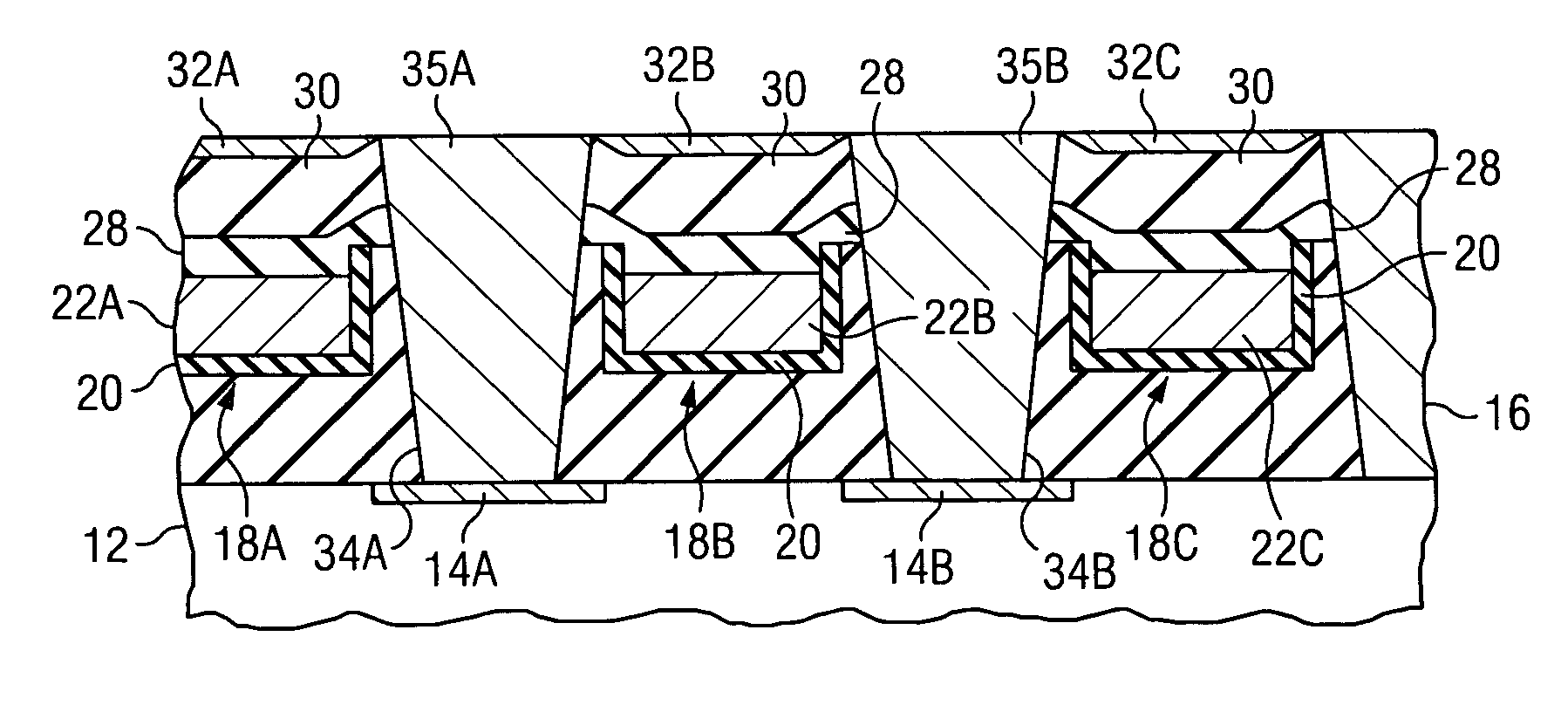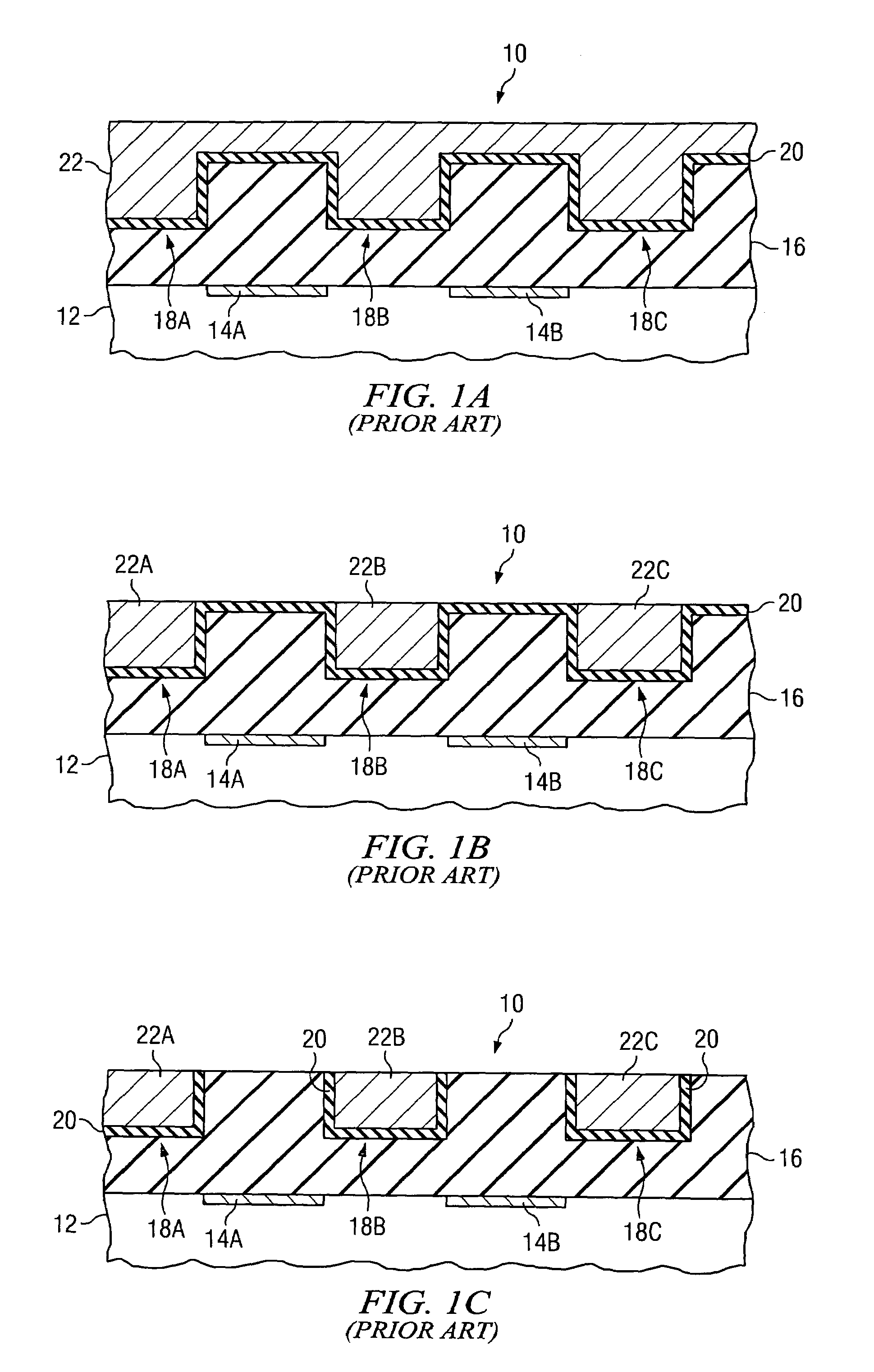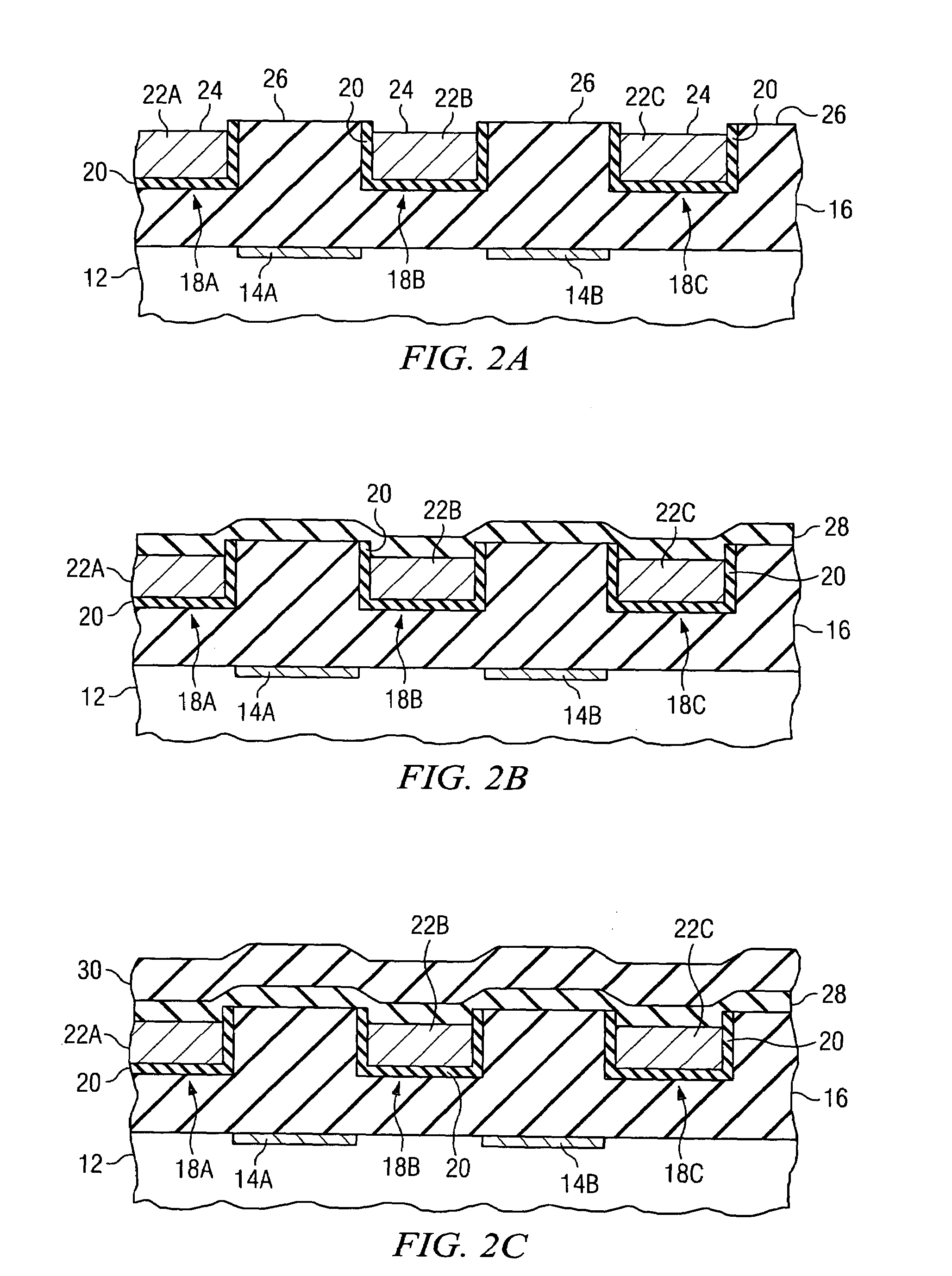Self-aligned mask to reduce cell layout area
a cell layout and self-aligning technology, applied in the manufacture of semiconductor/solid-state devices, basic electric elements, electric devices, etc., can solve the problems of reducing yield, waste of full wafers of devices, and increasing the area of each via, so as to achieve high capacitance, high density, and high capacitance
- Summary
- Abstract
- Description
- Claims
- Application Information
AI Technical Summary
Benefits of technology
Problems solved by technology
Method used
Image
Examples
Embodiment Construction
[0009]The making and using of the presently preferred embodiments are discussed in detail below. It should be appreciated, however, that the present invention provides many applicable inventive concepts that can be embodied in a wide variety of specific contexts. The specific embodiments discussed are merely illustrative of specific ways to make and use the invention, and do not limit the scope of the invention.
[0010]Referring now to the prior art FIG. 1A, there is shown a cross-section of a substrate with conductor or lines of metallization formed in a dielectric. Typically, the lines of metallization will be formed by the Damascene process but could be formed by any other suitable technique. As shown, a substrate 10 is comprised of a first level of dielectric 12 which may include a multiplicity of various types of selected circuits. For example, the connecting pads 14a and 14b may represent connections to lines of metallization or terminals of various circuits such as the bit line...
PUM
 Login to View More
Login to View More Abstract
Description
Claims
Application Information
 Login to View More
Login to View More - R&D
- Intellectual Property
- Life Sciences
- Materials
- Tech Scout
- Unparalleled Data Quality
- Higher Quality Content
- 60% Fewer Hallucinations
Browse by: Latest US Patents, China's latest patents, Technical Efficacy Thesaurus, Application Domain, Technology Topic, Popular Technical Reports.
© 2025 PatSnap. All rights reserved.Legal|Privacy policy|Modern Slavery Act Transparency Statement|Sitemap|About US| Contact US: help@patsnap.com



